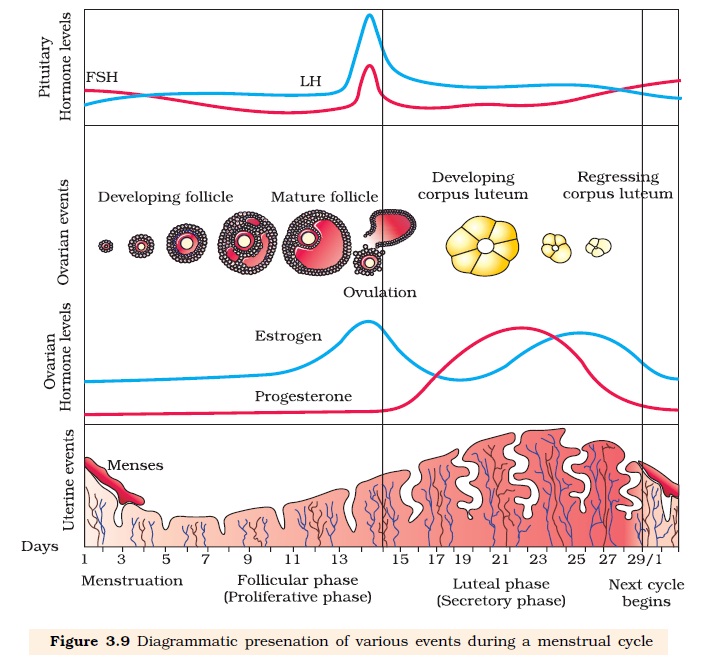1
Question
Short / Long Answer question Type :
Describe the events that occur during ovulatory and secretory phases of the menstrual cycle.
Describe the events that occur during ovulatory and secretory phases of the menstrual cycle.
Open in App
Solution
1. Ovulatory phase - It refers to the release of the ovum from the ovary. This usually occurs mid-cycle i.e. on the 14th day of the menstrual cycle. During the follicular phase, the developing follicle causes a rise in the level of estrogen. The hypothalamus in the brain recognizes these rising levels and releases a chemical called gonadotrophin-releasing hormone (GnRH). This hormone prompts the pituitary gland to produce raised levels of luteinizing hormone (LH) and FSH. Within two days, ovulation is triggered by high levels of LH. The egg is funneled into the fallopian tube and toward the uterus by waves of small, hair-like projections. The life span of the typical egg is only around 24 hours. Unless the ovum gets fertilized by sperm during this time, it will die.
2. Secretory phase or Luteal phase - After the ovulation, the luteal phase starts. In this, the follicular cells and the cells of zona granulosa of a ruptured follicle form a yellow glandular structure known as Corpus luteum. Its main function is to secrete a different kind of female sex hormone termed as Luteal hormone (Progesterone). Progesterone prepares the uterus for implantation of the fertilized ovum to establish a pregnancy. It thickens the endometrium of the uterus, increases blood supply, the fat, and glycogen, contents of the endometrium cells. Thus we can see that there's an increase in the level of progesterone in the luteal phase.

2. Secretory phase or Luteal phase - After the ovulation, the luteal phase starts. In this, the follicular cells and the cells of zona granulosa of a ruptured follicle form a yellow glandular structure known as Corpus luteum. Its main function is to secrete a different kind of female sex hormone termed as Luteal hormone (Progesterone). Progesterone prepares the uterus for implantation of the fertilized ovum to establish a pregnancy. It thickens the endometrium of the uterus, increases blood supply, the fat, and glycogen, contents of the endometrium cells. Thus we can see that there's an increase in the level of progesterone in the luteal phase.

Suggest Corrections
0
View More
Join BYJU'S Learning Program
Join BYJU'S Learning Program
